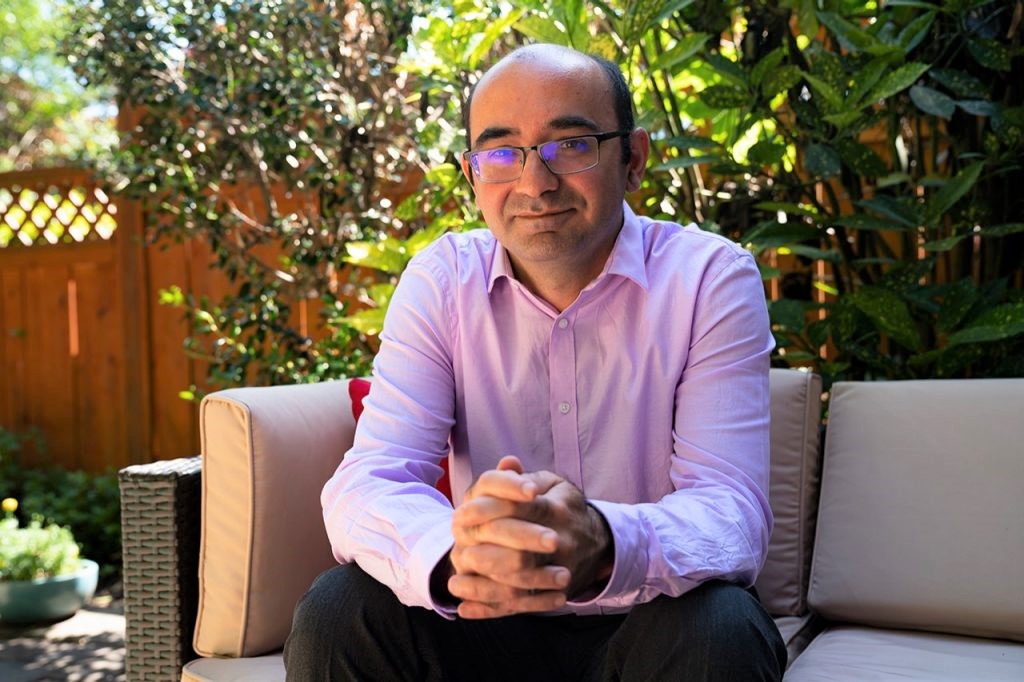 Navid Ghaffarzadegan’s complex COVID-19 simulation model shows how human behavior will likely impact the spread of the virus.
Navid Ghaffarzadegan’s complex COVID-19 simulation model shows how human behavior will likely impact the spread of the virus.
But the model’s fall 2021 forecast can be summed up in a simple formula – more vaccinated Hokies = a more fulfilling semester.
“During the pandemic, we got used to this idea that there is a trade-off between having an enjoyable social life and staying safe from COVID-19,” Ghaffarzadegan said. “Now, with the vaccine, the story has changed; there is no trade-off. You can have a reasonable social life and stay safe and healthy while enjoying your educational experience. You can have the cake and eat it too, if we all get vaccinated.”
Previously, major factors have included the adoption of face coverings, testing, and frequency of public health messaging, but the widespread availability of vaccinations has proven a much more influential factor.
“In terms of effectiveness, nothing is comparable to vaccines in the model,” he said. “If we start the semester with a very large majority of students and employees vaccinated, you see a big change — there are almost no Covid cases.”
The most recent modeling confirms the importance of the university’s approach to vaccinations – required for students and strongly encouraged for employees – as Virginia Tech prepares for a fully in-person fall semester.
“Dr. Ghaffarzadegan’s model demonstrates that vaccines are the most effective tool we have to prevent the spread of COVID-19,” said Virginia Tech President Tim Sands. “The closer we get to our goal of a 100 percent vaccination rate, the closer we are to returning to the full Virginia Tech experience.”
Ghaffarzadegan’s work has been a part of the university’s decision-making process throughout the COVID-19 pandemic. His models for both the fall and spring semesters of the 2020-21 academic year can now be compared to actual data available from those periods.
“Navid has created a state-of-the-art model that is tailored to Virginia Tech,” said Ron Fricker, interim dean of the College of Science. “Over the past year, previous versions were used to help inform decision making and contributed to the safe operation of our campus. His model now shows that achieving high vaccination rates is key for Virginia Tech to be able to return to something approximating pre-pandemic normality in the fall.”
“More that 150 million Americans, and millions more around the world, have taken one of the vaccines. The science and the data show that they are overwhelmingly safe and effective,” said Laura Hungerford, professor and head of the Virginia Tech Public Health Program in the Virginia-Maryland College of Veterinary Medicine. “For the good of the campus and our communities, Navid’s model makes it very clear that we all need to follow the public health guidance and get vaccinated.”
Both students and employees are required to submit proof of their vaccination, via either the Online Student Health Portal or COVID-19 Vaccination Status Self-Reporting form for employees.
While the university’s efforts are helpful, Ghaffarzadegan’s model shows reaching the full potential for the fall semester really hinges on individuals deciding to take care of themselves and others.
“The more students and staff that are vaccinated, the better the university experience will be as [public health] measures get more and more relaxed,” Ghaffarzadegan said. “At Virginia Tech, serving our community is one of our main missions. One major way of serving our community is just trying to contain the virus, by getting vaccinated and by keeping our friends and community members safer.”
— Written by Travis Williams


